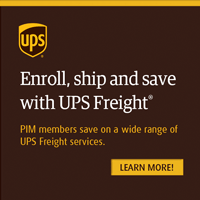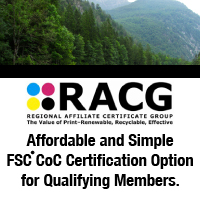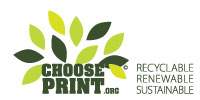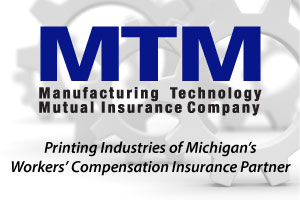By Stuart Margolis, Margolis Partners • www.MargolisPartners.com. P 610.667.4310.

Incentives Based on Operating Improvements
One way is to provide creative opportunities for the staff to receive incentives. Since a typical goal is to remain efficient, incentives could be based on operating improvements, 14 efficiencies, etc. This way, by challenging your staff to help contain costs and be more productive, you will be able to recognize and financially reward them for doing so.
Generally, it is best to reward staff and management for areas of operations they work in and can control. Generally, those items to build the incentives around should have a level of variability to them, and hence need a focus of effort and/or control. For example, direct production overtime is variable, it needs a level of focus from management on a regular basis all year, whereas building rent does not. Some possible group incentive based benchmarks include:
- Gross Profit
- Spoilage
- Overtime
- Pre-tax income
- EBITDA
Gross Profit
Virtually anyone in a manufacturing company is a candidate for inclusion in an incentive program based on gross profit.
Here are the key elements of a Gross Profit incentive program:
- Higher chargeable production hours or lower non-chargeable hours or a better utilization factor
- Direct Labor including overtime
- Utilities – turn off the lights, HVAC
- Supplies – cut out waste and overuse
- Repairs and Maintenance – maintain rigid maintenance schedules and take care of the equipment
If there is a shop supervisor or manager that can personally impact a certain area of performance, it could be wise to break out a separate/personal goal for them that ties-in to the overall goal. When doing so, make sure they take responsibility for the goal and buy in to plans for achievability.
Spoilage
Reducing spoilage is a great opportunity. It seems that almost everyone is satisfied if spoilage is 1.5% of sales. At $10,000,000 in sales spoilage of 2% is $200,000. A 25% savings would improve cash flow by $50,000 which is a decent monetary reserve to utilize for incentives. Is there a department or team that can directly impact spoilage? If so, let them set the annual goal. Then, delineate how they envision spoilage decreasing. Break it down into monthly or quarterly estimates. Suggest ways the estimate can be achieved on a weekly basis with an actionable item. Ask them to try to meet the weekly goal and monitor their results. Realize that change is hard. Closely monitor it in the beginning. If performance is off course, uncover reasons. If correctable, suggest adjustments.
Overtime
Overtime is a culprit that can drain cash flow quickly and it may be difficult to control and reduce. After all, it may be the most important “culprit” in meeting production schedules and job turn around. With the cooperation and communication among the salespeople, production management and staff on focusing to improve efficiencies, it is possible to improve overtime efficiencies.
Here are some creative ways to think about it. Ask salespeople to get a clear understanding of client deadlines and demand. If 12-24 hours can be added to a production schedule, overtime can sometimes be avoided. Alternatively, if a job’s set up time is negligible, and the client doesn’t need the full order of the product immediately, sometimes a partial order fulfillment could work. Run part of the job now (to give the client what they presently need), then run the rest of the job latter when there is a break in the schedule (without overtime). We have actually seen both these tactics work and the savings can be very significant.
Pre-Tax Income
or EBITDA (Earnings Before Interest and Taxes, Depreciation and Amortization)
Setting a goal based on Pre-Tax Income or EBITDA is typically another group goal. The group as a whole must work together for achievement. It can provide valuable teamwork and learning opportunities for your staff since some players will pay attention to the goal while others may not. The philosophy? Hopefully the result-driven members of the team will pull along the less focused, reminding them to stay on task. Of course, it’s important to have the right people on the bus (Jim Collins, “Good to Great”.)
Summary
Different types of incentive programs may be appropriate for different personnel or departments in your organization. Be careful, to set goals so that the assigned parties are actually able to achieve the goals. Incent teams to achieve the goal with individual goals given to particular people, departmental goals given to specific teams that can contribute and company-wide goals set when a full effort is needed. Safeguard against setting goals that destroy teamwork and a commonality of purpose or set up “walls” or friction between departments.
If this sounds like too much planning, too much to handle, take a day to retreat, think about goals and bring them back to the grind. If it doesn’t work, rethink it. We run retreats all year long for profit leading, goal-focused companies to help re-focus.
Using incentive-based pay can help maintain a healthy cash flow environment since labor costs only increase when goals are actually attained. It creates a positive energized and forward-thinking environment. Savvy staff members thrive under great leadership, hope and purpose. Challenge them with incentives that are not just based on sales. Next year at this time, you will be glad you did.
About Margolis Partners: Margolis Partners has long been recognized as the financial expert for family- owned businesses with a specialty in the printing, packaging and allied graphic communications industries, assisting thousands of companies with strategic and financial management, valuation, mergers/acquisitions, accounting, audit and tax services. The firm is noted for its expertise in enabling companies to optimize profits. Proudly, it is the purveyor of the industry’s Value-Added Principles of Management, and compiles the annual Printing Industries of America Ratios, the printing industry’s premier financial benchmarking tool.







